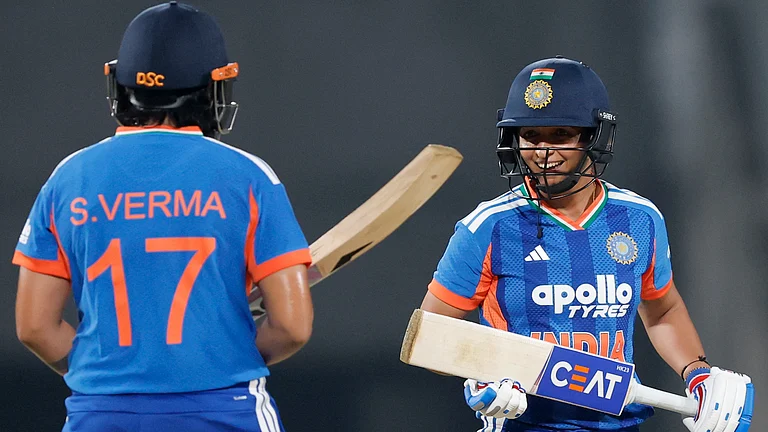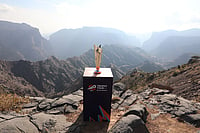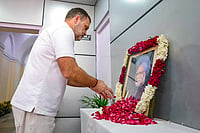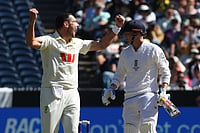The Process Each ATM is connected to a host computer, which is fitted inside the machine itself. This computer is connected to the central bank server also known as the ATM Switch, which resides at the bank level. The central server is the main brain behind the ATM and gives it instructions to perform various functions, including dispensation of cash. All the screen instructions in an ATM are sent from the central server.
When a customer puts in a card, the card reader reads it and asks for the PIN. Once the PIN is keyed in by the customer, it goes to the central server, which authenticates it and asks the customer what he/she wants.
Once the withdrawal option is selected, the machine asks for the amount to be withdrawn. After the amount is entered, the server picks it up and sends it to the bank host, which could either be the same bank to which the ATM belongs or an even an outside bank, where the customer’s account details are held. The central server then checks the balance, debits the account for that amount and then sends instructions to the ATM to dispense the cash.

If the card is from the same bank, it is known as an “on-us” transaction and, when the card has been issued by a different bank, it is known as an “off-us” transaction.
In an off-us transaction, the ATM switch recognises the card as being from another bank and sends the information and request to the National Payments Corporation of India (NPCI), which redirects the request to the respective bank (the outside bank host), which authenticates the request and issues instructions which are sent back to the ATM. The central server recognises the approval by the bank host and then issues instructions to the ATM to dispense cash.
The Cash storage Cash is stored in ATMs in cassettes. Most ATMs have four cassettes each, holding about 2,000-2,500 notes. If the notes are new, then the cassette can hold more cash, but old notes get thick. As such, depending on the denomination, an ATM can hold between Rs 6-10 lakh when fully loaded. At present, the cassettes meant for Rs 500 and Rs 1,000 are being left empty in ATMs and are being re-configured.
ATM cash cassettes are reconfigurable and can be calibrated to suit a particular shape or size of currency. That is the process that is going on now to suit the new series of Rs 2,000 and Rs 500 notes, which will take another 10 days to complete. The Rs 1,000 cassette will be reconfigured and calibrated for Rs 2,000 and the Rs 500 cassette will be re-calibrated in for the new Rs 500 note, which has a different size and specifications.
Each cassette is a live machine, where internal settings and adjustments have to be made within the railings of the cassette to suit the size and shape of the note. The internal software on an ATM also needs to be changed and reconfigured to recognise the new cassette and recognise the type of note in each cassette in an ATM. Once that is done, it is automatically synchronised with the central server through the host computer. After this process is over, cash is loaded and the software automatically updates the host computer and the central server on how many notes have been loaded in each cassette.
With each transaction, both the host computer and the central server keep a count of how many notes have been dispensed with from a particular ATM. Once an ATM reaches a “threshold limit” where only a certain number of notes are left in it, it automatically sends an alert to the cash agency through the ATM host computer software and the central server. The entire communication between the ATM and the central server is done over internet and telephone lines. Many ATMs with high volume transactions also use leased lines for their communication. The cash management for ATMs is outsourced by most banks to cash agencies who manage the cash and refill money in an ATM.
How Many? India has about 2,30,000 ATMs of all variety across the country. These are either deployed by banks, or are ‘White label’ ATMs—ATMs that do not belong to any particular bank, ATMs deployed by independent operators and cash recycling ATMs.
There are four main players who manufacture or run ATMs: NCR, which has the largest number of ATMs, CMS, Diebold Nixdorf and AGS.
The Fillers ATMs go dry due to the inability of banks to refill them. ATMs are refilled by cash management companies, which are outsourced by banks. But they can act only when instructed by the bank. There are 4-5 mainline cash management companies in India, including SIS, Writer, Brinks and CMS.
While cash management companies refurbish ATMs when they get an alert, the banks, under the current circumstances, should have taken a pro-active stance and started refurbishing cash in ATMs several times in a day to prevent any inconvenience to people.
Banks and ATM companies say that they are unable to do so because of shortage of currency. Banks do not have enough stocks of lower denomination notes like Rs 100 and Rs 50. Last year, there was a shortage of Rs 100 notes in the market, and this continued till the beginning of this year. Following demonetisation of high denomination notes, RBI has released fresh Rs 100 notes in the markets, which are being disbursed by the banks, but the quantities are far below the requirement in the market.






















